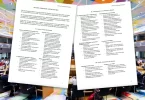Paul-Louis Arslanian, the director of the French agency investigating the crash of Air France Flight 447, said Monday that investigators could take at least a year-and-a-half to reach a conclusion.
Arslanian said he still doesn’t know exactly where the plane went down nor what caused the accident, three months after the Rio to Paris flight crashed into the Atlantic, killing all 228 people aboard.
Speaking before a gathering of aviation journalists in Paris, Arslanian said the French BEA accident investigation agency has not issued a recommendation to airlines over speed measuring equipment (pitot tubes) because he didn’t have evidence to justify it.
Nevertheless, since the crash both the European air safety agency and planemaker Airbus advised airlines to replace the Pitot probes used on the doomed jet with a later and more reliable model made by a US firm.
A series of automatic messages sent by the plane point to a malfunction of the Pitot tubes, which some experts think may have iced over and given false speed readings to the Air France plane’s computers as it ran into a turbulent thunderstorm.
Just before Air France 447 went down, it transmitted a four-minute data reporting 5 failures and 19 warnings via its radios (ACARS). The data already gives a hint what went wrong on the airplane but the true story will come out if searchers find the black boxes.
Emergency messages emitted shortly before the crash showed that the pilot had had to revert to manual controls and that the plane’s speed was “inconsistent.”
If true airspeed is not known it is so easy to stall or overspeed the plane. That’s why the A-330 has three pitot tubes. If they all iced up, or get clogged with crystals, they won’t work, but to prevent icing, they are heated. There were many instances that A-330 pitot tubes were icing and failing in flight so Airbus issued a “service bulletin” recommending airlines replace them with a newer model that has a more powerful heater. It was not considered urgent – and so the pitot tubes on the doomed plane had not been replaced yet.
After all these Mr. Arslanian still saying “If I had thought it was important to make a recommendation, I would have done it.”
The epic thunderstorm system that Air France 447 flew into would have created icing that could have overwhelmed the factory installed original pitot tubes.
These type of failures chronicled in the ACARS text messages were identical to a 2008 event when an Air Caraibes A-330 flying the same route encountered same pitot tube icing. That plane was not in such severe circumstances so the crew was able to get things back under control – and lived to report it to their company and Airbus.
As auto flight control systems fail in an Airbus, the rules that the computers live by change from “normal”, to “alternate”, to “direct” law. At each stage the computers surrender more authority to the humans – until finally all computers gives up and control no more and all authority and controls are handed to pilots – with darkness and thunderstorm with no help at all from computers – at just the point they need them most.
Here in this event, while everything is calm and quiet aircraft getting blown around by turbulence, all major instruments become useless and hundreds of alarms some with very high pitch sounds and blinking lights all vie for pilots attention. And the need to fly with absolute minimum equipment and control.
A plane that was designed and built to be controlled by computers – with a deceptively simple cockpit becomes so complex and confusing it is almost impossible to pick the most urgent action.
In this event AF447 appeared to have crossed through three key thunderstorm clusters: a small one around, a new rapidly growing one at about, and finally a large multicell convective system (MCS). According to AF aircraft transmission, the aircraft entered a “thunderous zone with strong turbulence.”
While three different flights deviated from the route and flew their destination safely begs the question: Why did the crew of AF447 decide to stick with the original route while they have the state-of-the-art radar showing the thunderstorms ahead?
The remains of Mr. Dubois, 58, and those of one of the stewards, were among a dozen bodies identified from 50 that were found in the Atlantic off Brazil and taken to the coastal city of Recife. The discovery of Mr. Dubois’ body was seen as a possible confirmation that, in keeping with standard practice, he was resting during the cruise phase of the flight. The first and second officers would have been at the controls. It is thought that seat-belted pilots were unlikely to have been thrown clear of the tightly enclosed flight deck.
Arslanian said around 1,000 parts of the plane have been recovered from the Atlantic Ocean – including a nearly intact vertical stabilizer-rudder, an engine cover, uninflated life jackets, seats and kitchen items.
Brazilian authorities have yet to send detailed information on the results of the autopsies, although the BEA is working with general information obtained from French authorities, he said.
Arslanian has said investigators are gearing up for a third phase of searching, over a wider area, which could cost tens of millions of euros and start before the end of the year. Airbus has offered to help fund the search.
A preliminary report into the crash said the plane hit the ocean intact and belly first at a high rate of speed. But without the flight recorders, investigators may never know fully what happened.
Relatives of the dead have angrily demanded that Air France and Airbus take responsibility for the crash and French prosecutors have opened a preliminary manslaughter investigation that could lead to negligence charges.
Hopes of finding the two flight recorders were almost finished because the locator beacons are already lost power by June 30.
Leaks from Air France and pilots’ unions indicated that the airline was aware earlier than it has publicly admitted that there was a problem with the speed instruments on the fleet of long-range A330 and A340 aircraft. At accident time Air France was already in the process of replacing the pitot tubes.
Air France 447 was the 36th flight in which there had been known faulty speed readings on the A330 and A340 series operated by various airlines, said Eurocockpit, a French-language website run by pilots, including Air France crew.
The previous incidents followed the same pattern as those reported by AF447, except that the pilots were able to recover control and return to normal flight.
Because of the storm conditions maintaining control in AF447 would have been a monumental task, the website said. “We have consulted the [Air France] pilots who had these pitot problems. All told us that it took a big immediate dose of lucidity to avoid distraction by the stall warnings which came with the incident and face up to the deluge of alarms.”






















